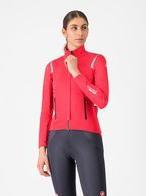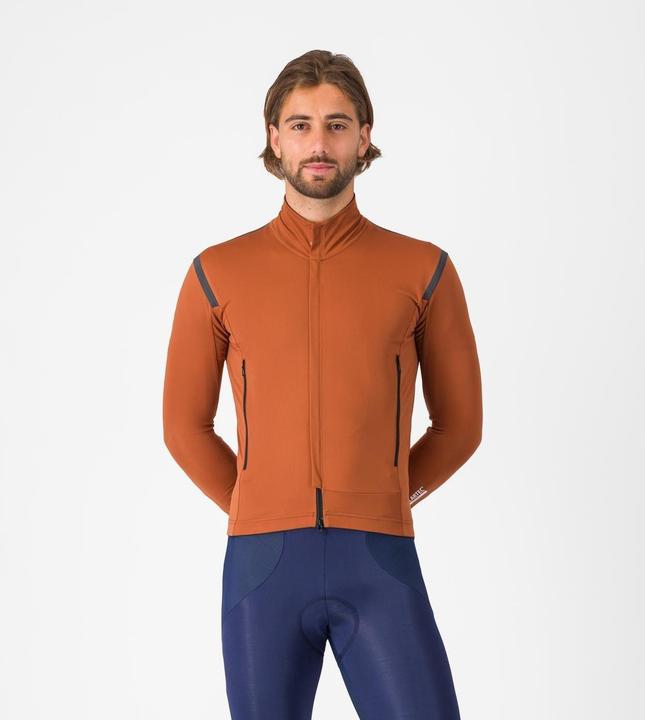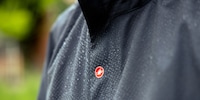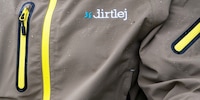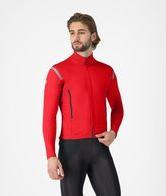

Perfetto RoS 3 from Castelli is the almost perfect cycling jacket
With the new cycling jacket from Castelli, there's now one more reason to get on the saddle. The Polartec AirCore material scores highly in terms of breathability, but reaches its limits in the rain. However, this is not surprising.
Recently, the Italian manufacturer of cycling clothing Castelli announced its cooperation with the American functional fabric pioneer Polartec. The so-called Polartec AirCore was developed within this framework. A new material that promises true wonders.
The Perfetto RoS 3 jacket, according to the manufacturer the «perfect jacket in rain or shine», was recently launched as the first product with the new technology. Polartec AirCore keeps riders dry by allowing air to pass through. At the same time, the material offers wind protection and water repellence.
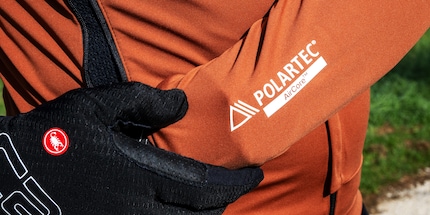
Breathability at its best
The manufacturer praises the new technology to the skies: «The material is essentially windproof and waterproof.» What exactly does that mean? «The jacket has been designed to allow a very small, barely perceptible amount of air through, which absorbs sweat and channels it outwards. This keeps riders drier than would ever have been possible with a membrane jacket.»
Castelli doesn't just talk the talk, it actually delivers. In dry conditions, the Perfetto RoS 3 impresses with outstanding breathability. I would even go so far as to say that this jacket is by far the best I've worn on the bike on this topic. After the first 90-minute ride in the sunshine and pleasant temperatures, I feel like I've hardly broken a sweat.
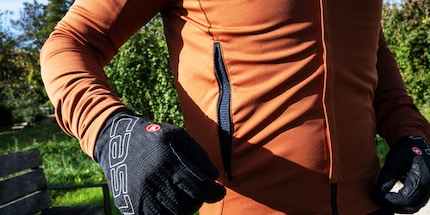
Laboratory tests have shown, according to Castelli, that the new material offers an air permeability of 0.7 cubic feet per minute (CFM) - in contrast to most competitor fabrics, which have no air permeability at all. The jacket also performs excellently in terms of water vapour permeability (MVTR) with 35,000 g/m²/24 hours. This means that 35 kilograms of water vapour can escape per square metre within 24 hours. By way of classification: a membrane is considered to be very breathable from 10,000, with the very best achieving up to 40,000. However, this MVTR value, which is standard in the industry, does not take air permeability into account and is therefore of little real significance.
The usual weakness in the rain
Breathability is therefore excellent in dry conditions and there's nothing to complain about in terms of windproofness either. Unfortunately, the same cannot be said for rain. Here, the Perfetto RoS 3 performs slightly above average at best. After all.
To be honest, this is not surprising, but to be expected. Water vapour can only escape from the inside to the outside if it can also be absorbed in the atmosphere. If the humidity is almost 100 per cent when it rains, it will also remain damp inside the jacket. This is not surprising, but a matter of physics. Even the most flowery marketing promises of a manufacturer are of no use here.

After 20 minutes in the drizzle and a further 50 minutes in the continuous drizzle, it is about as damp inside the jacket as it is outside. As already mentioned, I didn't expect anything else in principle. Accordingly, I'm not really disappointed with the jacket's performance in the rain.
100 per cent PFAS-free
The fabric is 100 per cent PFAS-free, as the top and back are knitted from recycled polyester. Castelli writes: «In light of the new PFAS-free era, we wanted to start from scratch when developing our Perfetto RoS 3 jacket. Talking to various fabric suppliers, engineers and scientists from around the world, we found in Polartec a brand that really understood our goals.»
Other features
- reflective, welded shoulder seams for additional rain protection
- Ventilation openings with zip at the sides
- YKK-Vislon zip at the top and bottom for easy gliding, covered for additional wind and rain protection
- three back pockets with drainage holes
- extended back to protect against splashing water
- reflective details on the pocket bottoms
- high collar against draughts

In a nutshell
Perfetto RoS 3 from Castelli: almost perfect
That's the thing about superlatives. They should be used sparingly. This cycling jacket from Castelli is also not "the perfect" cycling jacket. I maintain that there is no such thing (yet). Maybe that will change at some point.
For now, however, I'm happy with an almost perfect cycling jacket. The breathability of the piece is great, it also protects me from the wind. And in the rain, it does what all competitor products have done so far, just a little bit better. So four points for the Perfetto RoS 3 from Castelli.
Pro
- Very good breathability
- protects against wind
- Many well thought-out features such as 2-way zip
Contra
- Usual weakness in the rain
From radio journalist to product tester and storyteller, jogger to gravel bike novice and fitness enthusiast with barbells and dumbbells. I'm excited to see where the journey'll take me next.
